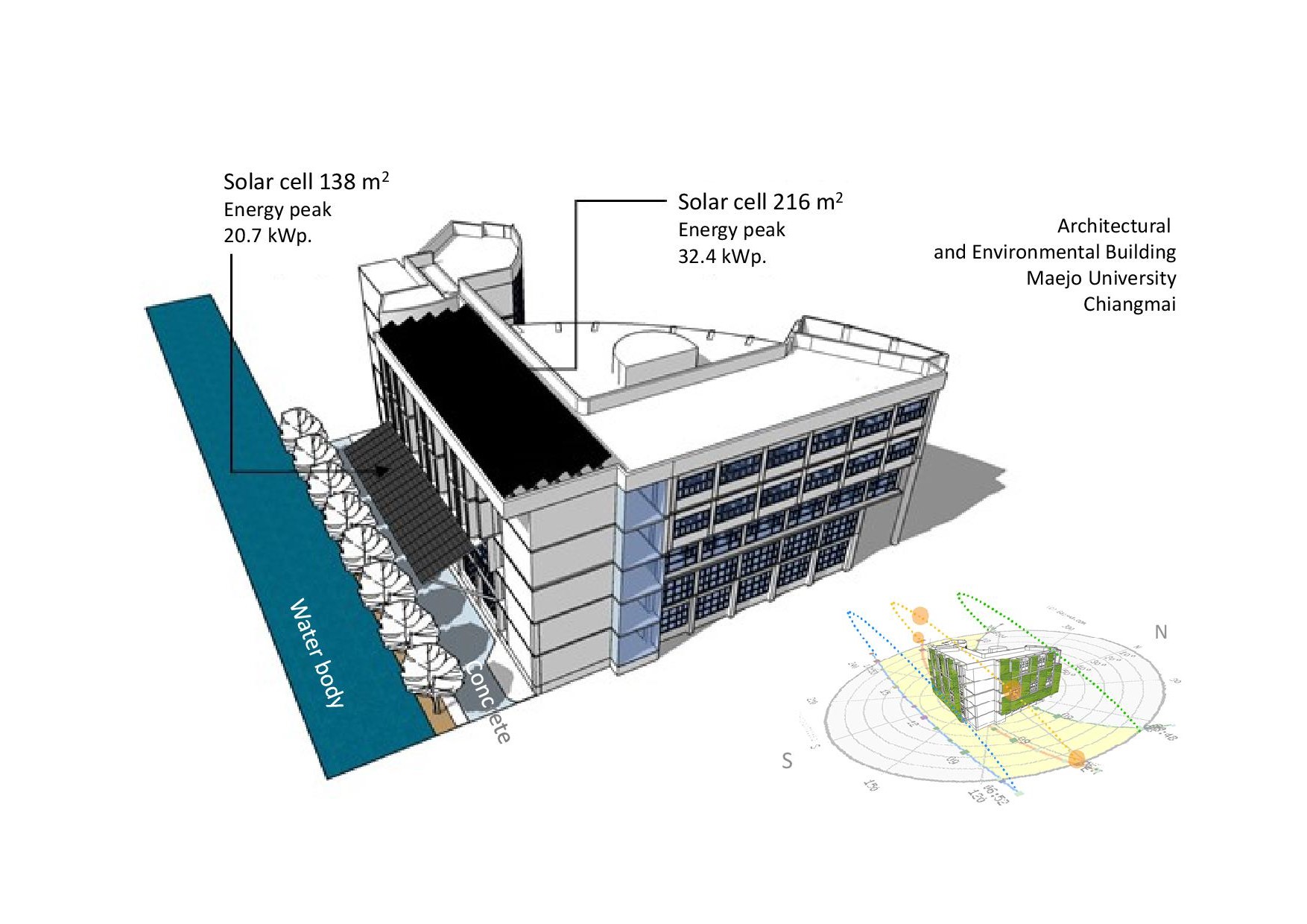Design Guidelines for Model Educational Building for Energy Conservation According to Green University
Main Article Content
Abstract
There is a continuous development of green university. Policy makers are concentrating on reduction of energy usage, and the increase of efficiency in alternative energy. This study has calculated energy use of an education building by record the follow data over a 24-hour period: (1) solar radiation as source of alternative energy, (2) building materials design with low heat transfer coefficient, (3) design of outside environment to reduce air temperature difference between the inside and outside of a building. The study found solar energy can reduce 100 percent of energy used in lighting and electric. Design of building materials and the outside environment can reduce 53 percent of energy used in air-condition, which resulted in a 69 percent decrese of the overall energy use. In conclusion, the process used in this study can be effectively applied to design and renovation guidelines for a “Model educational building for energy conservation and environment”.
Downloads
Article Details

This work is licensed under a Creative Commons Attribution-NonCommercial-NoDerivatives 4.0 International License.
All material is licensed under the terms of the Creative Commons Attribution 4.0 International (CC-BY-NC-ND 4.0) License, unless otherwise stated. As such, authors are free to share, copy, and redistribute the material in any medium or format. The authors must give appropriate credit, provide a link to the license, and indicate if changes were made. The authors may do so in any reasonable manner, but not in any way that suggests the licensor endorses you or your use. The authors may not use the material for commercial purposes. If the authors remix, transform, or build upon the material, they may not distribute the modified material, unless permission is obtained from JARS. Final, accepted versions of the paper may be posted on third party repositories, provided appropriate acknowledgement to the original source is clearly noted.
References
American Society of Heating, Refrigerating and Air-Conditioning Engineers [ASHRAE]. (2007). Energy standard for buildings except low-rise residential buildings (I-P edition). Atlanta: Author.
Boonyatikarn, S. (1982). A method for developing energy budgets and energy design guidelines for institutional buildings. Doctoral Dissertation of Architecture, University of Michigan, USA.
Iamtrakul, P., Nusook, T., & Ubolchay, P. (2014). Impact of urban heat Island on daily life of people in Bangkok Metropolitan Region (BMR). Journal of Architectural/Planning Research and Studies, 11(2), 53-72.
Kongboontiam, P., & Puraprom, W. (2015). Guidelines for reducing air temperature using effects of ground cover. Journal of the Faculty of Architecture, Silpakorn University, 29, 321-334.
Olgyay, V. (1992). Design with climate: Bioclimatic approach to architectural regionalism. New York: Van Nostrand Reinhold.
Puraprom, W. (2016). The impact of site elements to micro-climate air temperature. Journal of Architectural/Planning Research and Studies, 13(1), 23-34.
Solartech. (2013). Center limited partnership, Solar Cell 300W. Bangkok, Thailand: Solar Roof.
Srivanit, M., & Auttarat, S. (2015). The summer thermal environment and human comfort of shaded outdoor and semi-outdoor spaces to living in the urban area of Chiang Mai City. Journal of Architectural/Planning Research and Studies, 12(2), 53-72.
Stein, B., & Reynolds, J. S. (2000). Mechanical and electrical equipment for buildings (9th ed.). New York: John Wiley & Sons.
Thai Green Building Institute [TGBI]. (2012). Thai’s rating of energy and environmental sustainability for new construction and major renovation. Bangkok, Thailand: Author.

